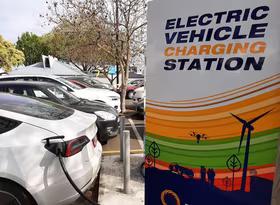New Zealand’s most creative city in 2018
Wellington City retains its top spot in 2018 as New Zealand’s most creative city, according to Infometrics’ Creativity Measure. Not only is Wellington City in a league of its own but it has been widening the gap with its closest rivals over the past ten years.
The Creativity Measure is based on the proportion of the workforce of each of New Zealand’s 66 territorial authorities that is employed in creative industries and occupations. In 2018 Wellington City had 6.5% of its workforce employed in the creative sector, compared with next ranked Auckland with 4.6%. New Zealand’s largest city has displaced Queenstown-Lakes District which was the second most creative city in 2017.
Graph 1

Wellington’s creativity extends beyond the borders of the city. Five of the top 10 creative cities and districts are located in the wider Wellington region.
The biggest movers on the creativity league table over the past 10 years are Waikato District (up from 48 to 33) and South Wairarapa (15 to 8). The rapid growth of Raglan and its expanding arts community is underpinning Waikato District’s ascension. The South Wairarapa towns of Greytown, Martinborough and more recently Featherston have enjoyed vibrant growth, each with expanding communities of creative and knowledge intensive professionals.
Creativity and innovation are critical drivers of economic development. The link between the creative arts and economic development, especially in the areas of high technology, was articulated by Professor Richard Florida during his time at the Carnegie Mellon University in the US. He challenged the notion that it is amenities and infrastructure that attract people to a city and argued that a vibrant creative community is a necessary condition to attract talented people to drive today’s knowledge economies.
Florida’s analysis showed that in the US there is a strong correlation between the size of the creative sector in a city and the strength of its high-tech industry. Ten of the top 15 creative cities in the US are also represented among the nation’s top 15 high technology areas.
New Zealand’s creative and innovative regions are set to benefit most from automation that will change the way we work, and the types of skills required by enterprises. Automation will create a swathe of new jobs – designers, engineers, data scientists and other IT professionals – those occupations that design, implement and maintain automated systems. Cities with established knowledge industries and creative and innovate community have a huge head start in capturing these new jobs. On the flip side regions with concentrations of lower skilled jobs that are susceptible to automation are at risk of losing a high proportion of their jobs.
The shift to automation is going to result in quite different outcomes for regions and has potential to exacerbate the existing inequalities between regional economies. To get a fair share of the future action regions will need to be able to attract, retain and develop creative human capital. Having a vibrant creative community is a good start to attracting talented people that will fuel the economies of the future.
The Creativity Measure is constructed from data from Infometrics’ Sector profiles. More information can be obtained from here.












